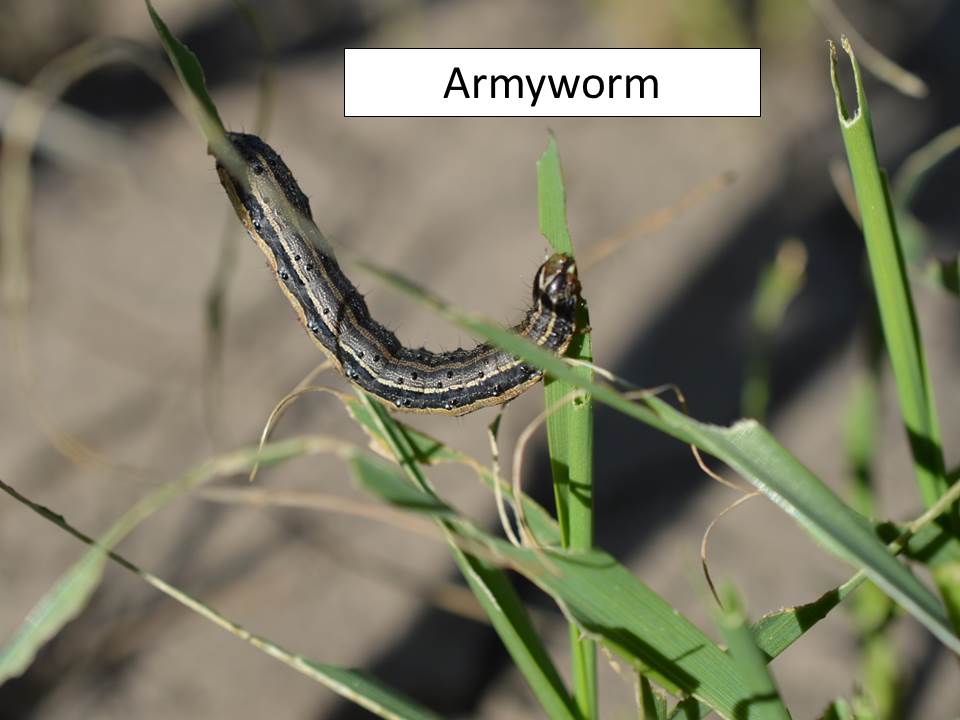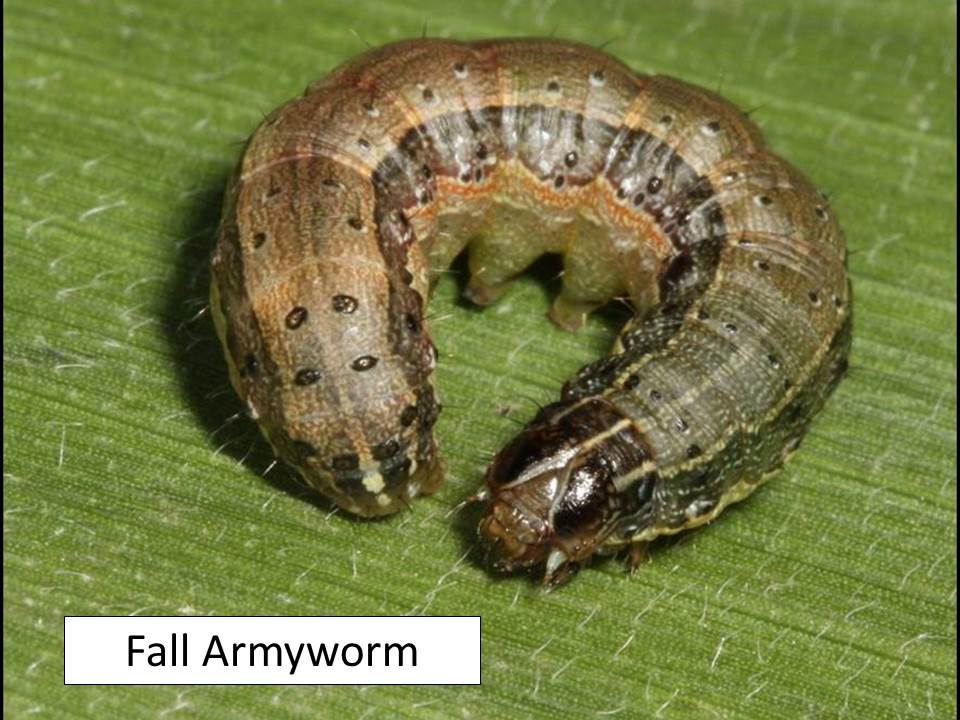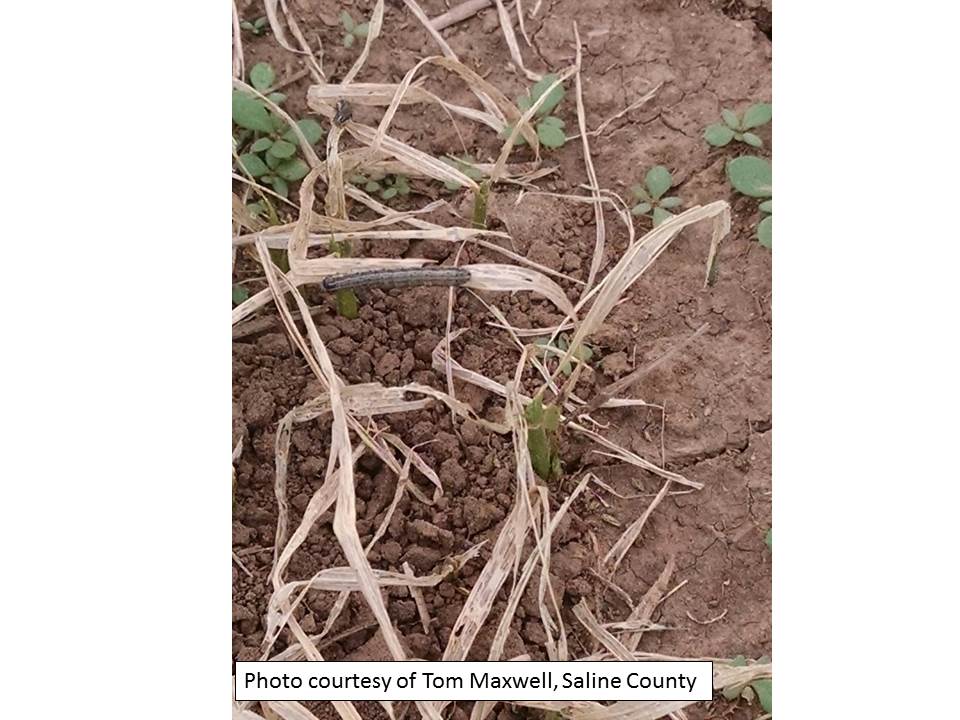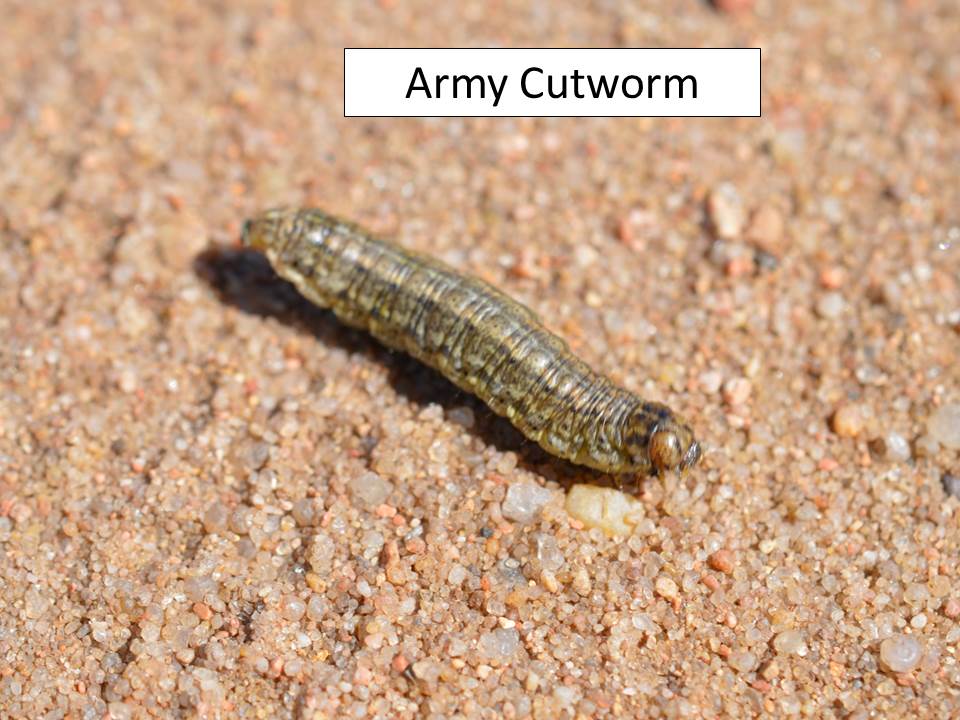–by Dr. Jeff Whitworth and Dr. Holly Schwarting
Several planted fields have already been sprayed to control worms. What we have been seeing in south central and north central Kansas are a combination of armyworms (see pic) and fall armyworms (see pic). Both of these species will do a similar type of damage. When they are small they will feed on one side of the wheat leaf causing what is commonly called ‘window paning’. As the larvae grow they devour more and more tissue until it may become quite noticeable and, under unfavorable growing conditions, may even severely reduce the stand (see pic). Armyworm larvae will feed, probably for a couple more weeks, depending upon temperatures, and then pupate. If we haven’t yet had a hard freeze, they may emerge as moths and lay eggs in other wheat fields. The first hard freeze will terminate armyworms. Army cutworms, on the other hand, will not be terminated by the first hard freeze but will continue to develop all winter, feeding anytime temperatures are over about 45°F and will complete their development in the spring (see pic). So, it is important to make proper identification of armyworms feeding in wheat as armyworms and fall armyworms will not be feeding throughout the winter and early spring but army cutworms will.



